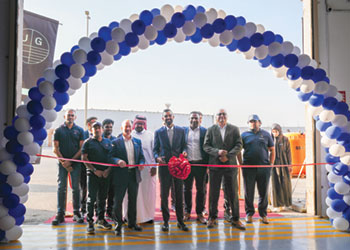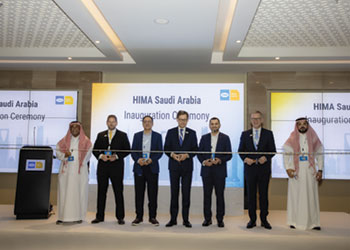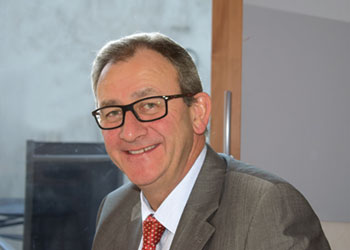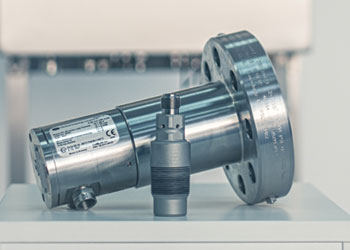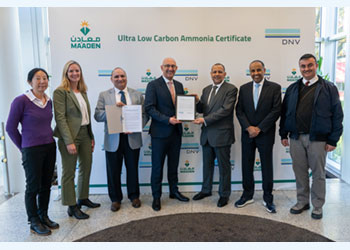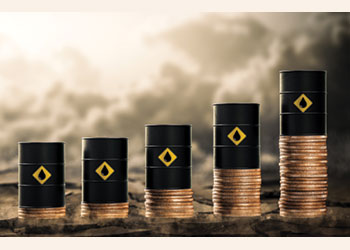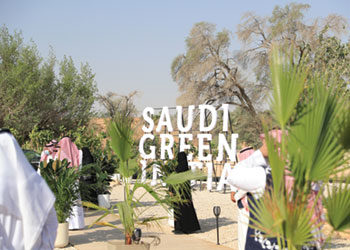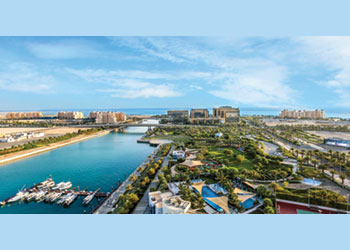
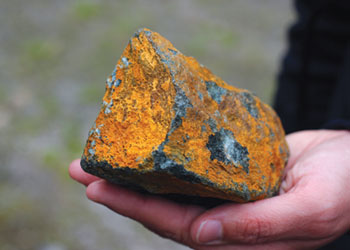 A yellow and brown ore stone containing copper and other minerals
A yellow and brown ore stone containing copper and other minerals
Opportunities exist to achieve very significant growth in minerals that would make Saudi Arabia a global leader in mineral value chains
As energy transition exponentially pushes the global demand for critical minerals, Saudi Arabia, with its vast untapped mining resources can play an instrumental role in delivering a sustainable future.
Beneath the Kingdom alone, the Arabian Shield is estimated to contain $1.3 trillion worth of potential mineral value, across numerous commodities, including copper, phosphate, gold, iron ore and rare earth minerals.
"Opportunities exist to achieve very significant growth in minerals that would make Saudi Arabia a global leader in mineral value chains globally," said Turki Abdulrahman AlBabtain, Saudi Arabia’s Deputy Minister, Mining Development.
This year’s Future Minerals Forum, which took place from January 9-11, brought together more than 16,000 participants from 145 countries to address some of the most pressing issues for the minerals sector, under the theme, ‘Creating Resilient and Responsible Mineral Value Chains in Africa, Western and Central Asia’.
The Kingdom and the surrounding Super Region of Africa and Western and Central Asia has vast quantities copper, lithium, nickel, cobalt and other rare earth elements that are essential in many of today›s clean energy technologies – from wind turbines and electricity networks to electric vehicles.
Take for instance the amount of minerals required in a single electric car. A typical EV battery requires approximately 8 kg of lithium, 35 kg of nickel, 20 kg of manganese and 14 kg of cobalt.
In addition, the charging infrastructure necessary to keep zero emissions vehicles on the road requires vast amounts of copper.
Similarly, solar panels use copper, silicon, silver and zinc, while wind turbines are constructed largely from iron ore, copper, and aluminum.
Saudi Arabia is trying to attract global players to invest into its mining sector. The Kingdom has the potential to be among the top three phosphate producers in the world, in addition to increasing gold mining output by over ten times, doubling the production of steel, and expanding into new value chains of uranium, titanium, rare earth elements and niobium/tantalum.
Eng. Khalil bin Ibrahim bin Salamah, Deputy Minister of Industry and Mineral Resources for Industrial Affairs, emphasisd the importance of forming a sustainable supply chain for minerals that contributes to achieving global value from mineral extraction.
He highlighted the need for fair investment in all stages of the supply chain to ensure equitable participation and stability in the medium and long term, especially in regions with significant mineral resources that the world needs.
In this regard, Saudi Arabia announced the creation of a Minerals Innovation Acceleration Park (MIAP), the first of a series of centers of excellence which will enable capacity building across the minerals value chain.
Saudi Arabia has the advantage of possessing extensive geological data. Its National Geological Database provides fully transparent, online access to 80 years’ worth of geological, geophysical, and geochemical data, including thousands of detailed reports on mining targets and prospects.
It has also launched the Regional Geological Survey Programme, which is conducting new geophysical and geochemical surveys to produce a detailed map of nearly 700,000 sq km of the Arabian Shield.
The third edition of FMF witnessed the signing of agreements between a number of government agencies, companies and institutions, while new exploration sites were announced as well.
The Ministry of Industry and Mineral Resources and the Japan Organization for Metals and Energy Security (JOGMEC) signed an MoU with a special focus on the supply of vital minerals.
An MoU was also signed with Jiangxi Copper to evaluate and explore investment opportunities in the Kingdom's copper value chain, covering the initial, middle and final stages.
Furthermore, the Innovation Mining Oasis Initiative was launched in cooperation between the Ministry of Industry and Mineral Resources, King Abdulaziz City for Science and Technology (KACST), the National Industrial Development and Logistics Program, the Geological Survey Authority, the Saudi Arabian Mining Company (Ma’aden).
The first day of the forum also saw the announcement of unexplored mineral estimates, rising from $1.3 trillion to $2.5 trillion, and the unveiling of new incentives to boost mining exploration by about $182 million in cooperation with the Ministry of Investment.
The forum witnessed the submission of the exploration license competition for the Jabal Sayid mineral belt, which contains a large wealth of base and precious metal ores, with an area of more than 4,000 sq km.
Also, 33 new exploration licenses were submitted through competition within the upcoming licensing rounds for 2024.
By Abdulaziz Khattak



















































































